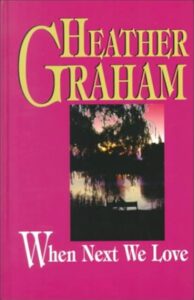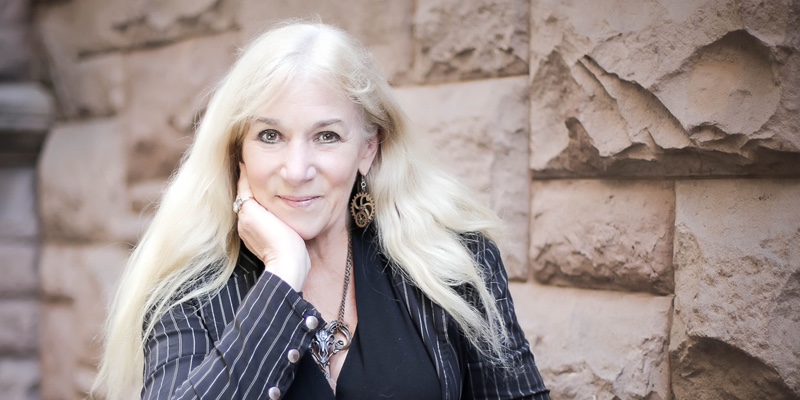It was another era. Not easier, but maybe not quite so crazy hectic as today. The stakes were still high, and in their day—the early 1980s—getting your first book published was still hard work. In many ways, harder.
Bestselling crime author Heather Graham knows. She lived it back then. She started out like most writers buying a Writers Market and mailing her bricks of paper to publishers via snail mail. And then she waited. Of course, this created a two-way street that sometimes worked to your advantage, she says. “If you said a manuscript was ready and it wasn’t, you could blame the post office.”
“The publishing world has changed drastically since then,” she says.
But maybe not the post office.
Before her writing career took off, she worked in dinner theater in Florida where she grew up and still lives. She also performed as a backup singer, a lifeguard, a swimming instructor, and as a bar tender. And she’s a certified scuba diver. She attended the Marcel Marceau School in Paris and received her theater degree from the University of South Florida.
Prior to becoming known for her prolific crime fiction, her first novel was in the romance category, When Next We Love. “There was a mystery in my very first romance, so I think I was heading in that direction.”
Today, Graham writes more books in a year (four—one hardback and three paperbacks) than the average American reads. She’s written almost as many books as there are years in the history of the United States—more than 200 novels and novellas. And like most writers, she started modestly, trying to learn the publishing business. To say the least, she figured it out.
She now has more than 70 million books in print. Her genres include suspense, horror, vampire fiction, mystery, romance, paranormal romance, historical romance, history, young adult, science fiction, time travel, and even Christmas family fare.
“I wasn’t so concentrated on genre,” she says. That’s putting it mildly. But she’s more focused today on crime fiction.
Graham didn’t have an agent when she began. She really didn’t understand them or why she needed one. She mailed manuscripts directly to publishers, skipping the whole middleman part. She’d completed three manuscripts and sent them out in hopes that some publisher would bite.
Her mother had told her, “You always have your nose in a book, why don’t you write one?” She took to heart her mother’s advice. When her third of five children arrived, Graham decided to stay home and write in between bottles and diapers. Her husband, Dennis, borrowed an old typewriter from his work, which had no “e,” key. So, each night, “I had to go back and fill in each line with the missing ‘e’s.” Talk about a personal touch! She might as well have been writing longhand.
Her mother was also her first editor. A native of Ireland, she spoke with a heavy brogue. Graham got in trouble once at school when she argued over the Irish spelling of colour. She pointed to it in one of her mothers’ books. Her teacher was not amused.
Graham’s mother was determined to learn to write like an American. In so doing, she became a copyeditor for an advertising agency. Graham was hesitant to have her mother read her drafts, but finally gave in and was delighted with the results. She became Graham’s first editor.
Her first novel to receive a nibble was her romance, When Next We Love. An editor from Dell Publishing called expressing interest and said she would get back to her, and then didn’t.
“I thought someone was playing a really cruel joke on me.” Up until now, the only writing she’d published was a short story in Twilight Zone, a now-defunct Canadian magazine.
She had no answering machine, which made her wonder had she missed a call? For the next three weeks, she waited, and nothing happened. Finally, she heard back and learned the editor had been away at a publishing conference. The editor, Anne Gisony, asked if she had any other manuscripts.
“Yes, but you rejected them all,” Graham told her. But now, Gisony explained, she was interested. Dell edited and revamped Graham’s other manuscripts, and they were later published. It was a teaching moment for Graham, who was beginning to understand the mysteriously pliable conventions of publishing.
More than a year later her first royalty check arrived just in time to cover the medical bills for her fourth child. As the great scribes say, timing in publishing is everything.
When Next We Love is a romance about a young woman who despises her dead rockstar husband’s bandmate only to be called to his island in the Florida Keys to help complete her husband’s unfinished musical scores. She’s ready to leave when she’s trapped on his luxury island just as a major storm hits and, of course, lightning strikes.
Graham sold her novel in 1982 but soon realized she couldn’t make a living off the meager royalties romance fiction offered. So, two years later she switched to historical fiction. That paid a living wage and that’s when she realized she needed a literary agent.
“When I was a kid, I fell in love with history,” she says. “When I got older, we would drive up the East Coast. A lot of history is free. So, I fell in love with American history.” Her trilogy on the American Civil War hit the New York Times bestseller list, as have several of her novels.
Graham has used her success to give something to her Florida community and her community of writers. She loves ballroom dancing and long ago hosted an annual Vampire Ball to raise money for the Pediatric Aids Society. She’s also founder of “The Slush Pile Players,” which puts on shows for conferences and charitable benefits. After Hurricane Katrina slammed into Louisiana, Graham started “Writers for New Orleans,” writers conference, which annually drew 150 writers and much-needed business to New Orleans. It stopped during the pandemic and she’s reviving it again.
And her career has been recognized by all the major crime writers’ groups and, of course, romance writers. When she was recognized by the Romance Writers of America, “I told my daughter, ‘Mommy just got a lifetime achievement award.’ She replied, ‘But you’re not dead yet, are you?’”
Thankfully no, but she’s explored the topic, having written a lot about vampires. Her career may have begun in another publishing era, but she’s very much alive and a presence and voice to be heard in the current world of publishing. Having 70 million books in print will do that for you.

___________________________________
When Next We Love
___________________________________
Decided to write a novel: Age 25
Experience: Short stories, romance novels
Agent Rejections: None because she didn’t realize she needed one.
Time to Sell Novel: 1 year
First Novel Agent: None
First Novel Editor: Anne Gisony purchased. Lydia Paglio edited.
First Novel Publisher: Dell
Age when published: 29
Inspiration: High school teacher James Parrot encouraged my imagination.
Website: www.theoriginalheathergraham.com
Advice to Writers: Always keep reading, never stop writing, follow the course that works best for you.
Like this? Read the chapters on Lee Child, Michael Connelly, Tess Gerritsen, Steve Berry, David Morrell, Gayle Lynds, Scott Turow, Lawrence Block, Randy Wayne White, Walter Mosley, Tom Straw. Michael Koryta, Harlan Coben, Jenny Milchman, James Grady, David Corbett. Robert Dugoni, David Baldacci, Steven James, Laura Lippman, Karen Dionne, Jon Land, S.A. Cosby, Diana Gabaldon, Tosca Lee, D.P. Lyle, James Patterson, Jeneva Rose, Jeffery Deaver, Joseph Finder, Patricia Cornwell, Lisa Gardner, Mary Kubica, Hank Phillippi Ryan, and I.S. Berry.

















